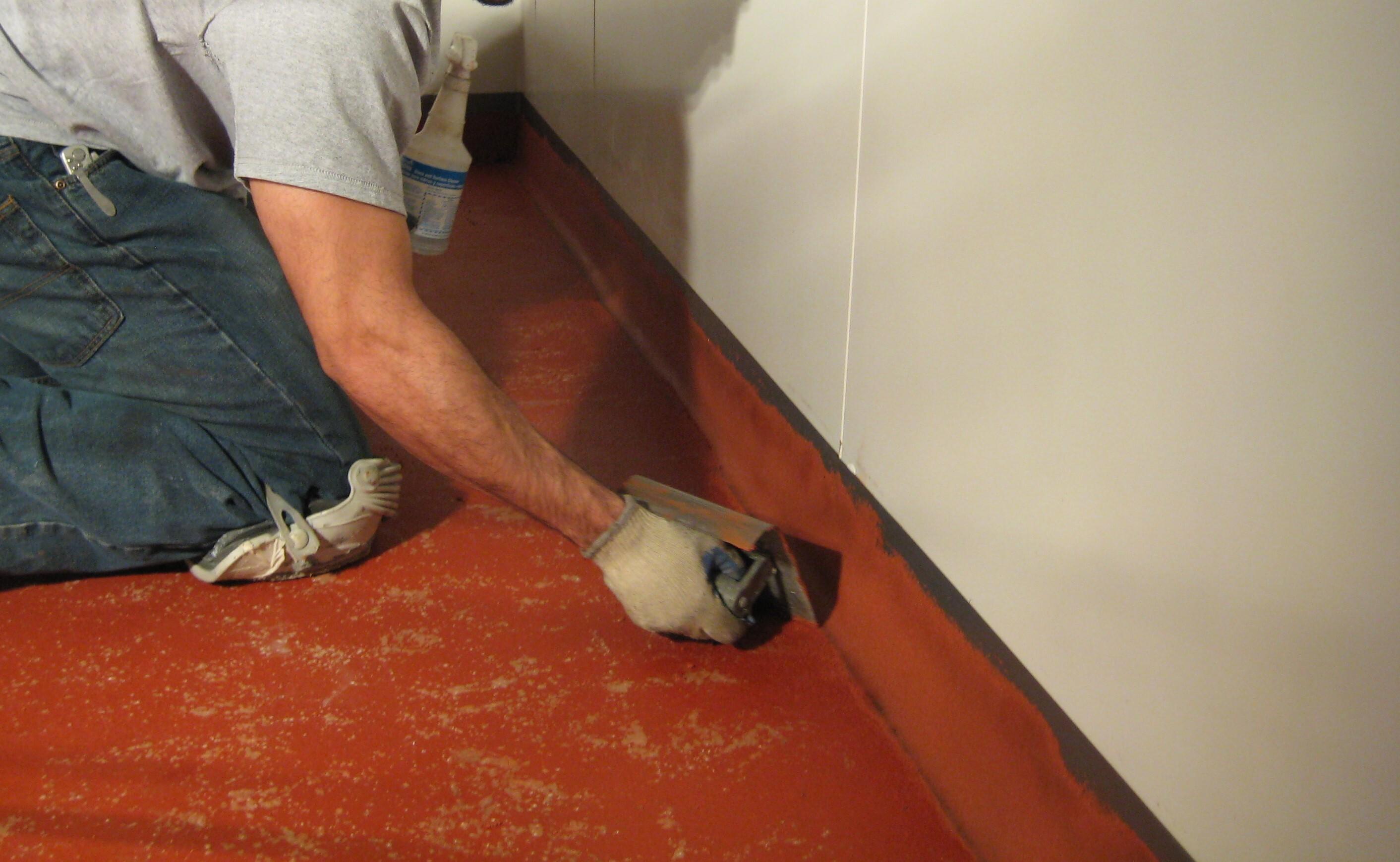The Challenge
Maintaining a safe and hygienic environment in food manufacturing freezers is essential, especially where floor and wall joints are concerned. This blog highlights the importance of adding a cove when applying Mortarthane™ HF to freezer floors. The cove offers a seamless transition from floor to wall, preventing bacterial growth and providing a longer-lasting floor system.
The Importance of a Cove at Floor/Wall Joints
In freezer environments, the floor and wall junction is especially vulnerable to water and temperature fluctuations, which can lead to degradation and contamination. Without a cove, the area is susceptible to damage and hygiene risks. Mortarthane™ HF is applied to create a strong, seamless bond between the floor and wall, ensuring a protective layer that prevents dirt, bacteria, and moisture buildup.
Step-by-Step Guide to Applying the Cove
- Surface Preparation
Begin by cleaning and roughening the concrete surface for the Mortarthane™ HF application. - Apply Mortarthane™ HF
Trowel the Mortarthane™ HF onto the floor, ensuring it covers the junction where the wall and floor meet. The product adheres directly to the concrete, offering maximum protection. - Create the Cove
Apply Mortarthane™ Cove Mortar into a smooth cove along the floor/wall joint. This step seals the joint and ensures a seamless, long-lasting connection. - Curing
Allow the applied product to cure before using the freezer, ensuring the cove and floor provide optimal protection.

Why Add a Cove?
The cove is essential in freezer applications, as it eliminates seams where bacteria and debris could accumulate, ensuring a hygienic and durable environment. By combining Mortarthane™ Cove Mortar with Mortarthane™ HF, facilities can achieve superior floor protection that stands up to temperature fluctuations and frequent washdowns.
For any food processing facility, adding a cove can make all the difference in maintaining a clean and safe environment.